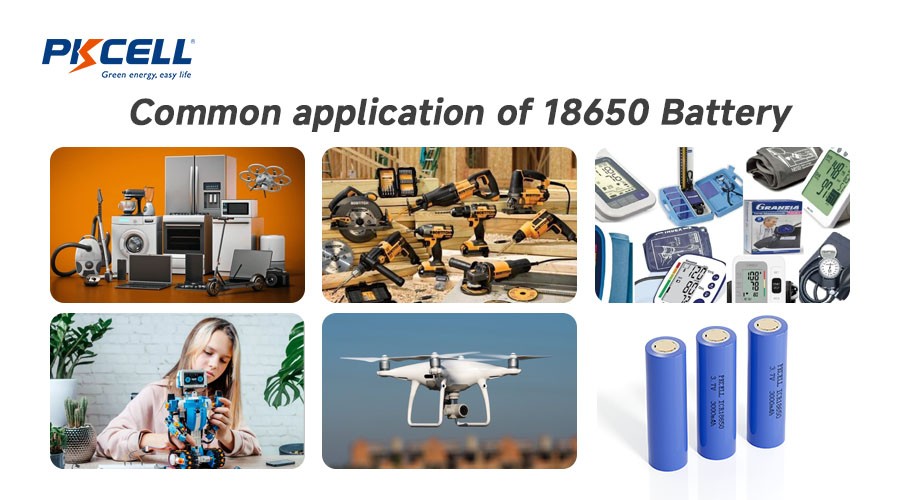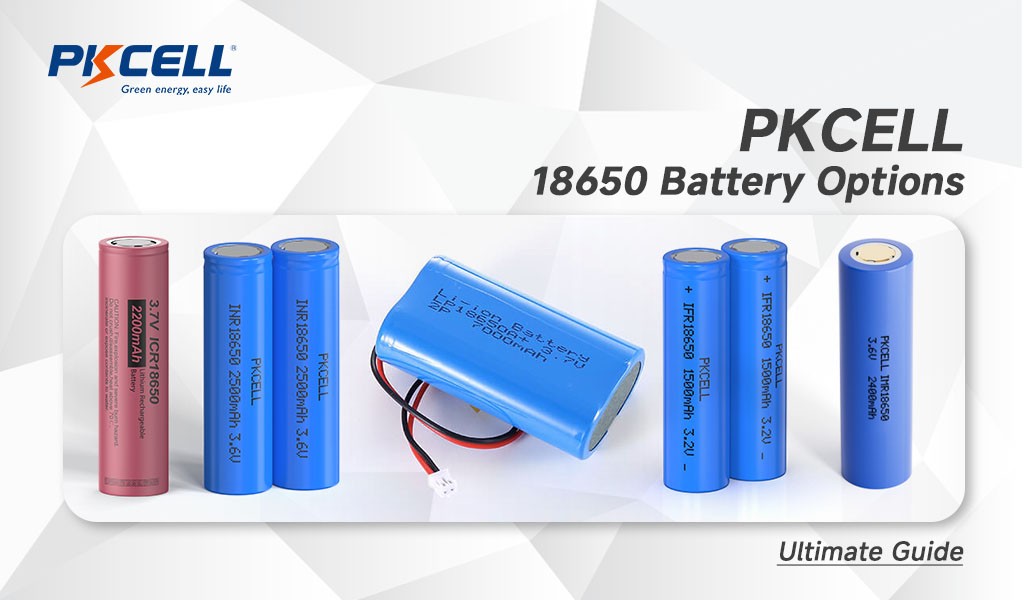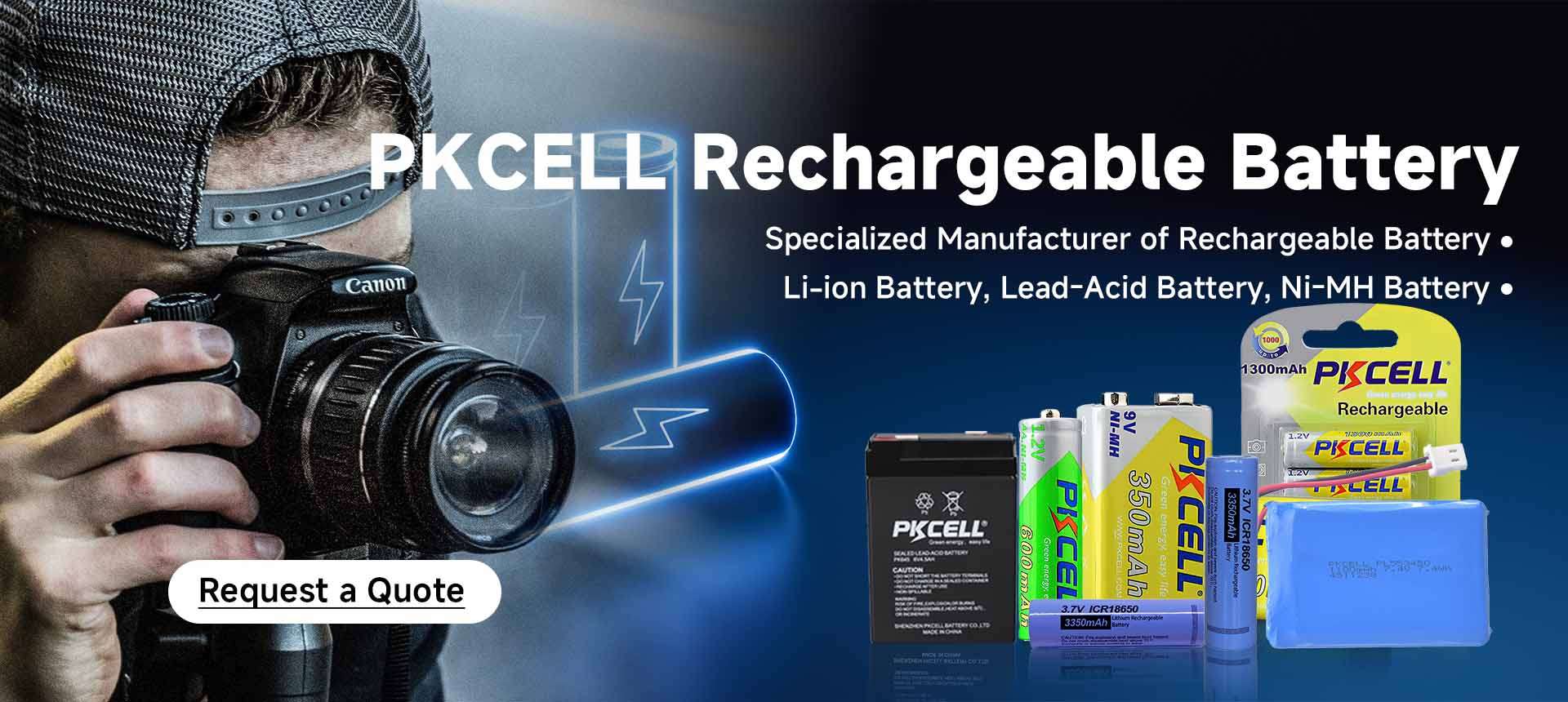Key Highlights
- Learn why it is important to pick the right 18650 rechargeable battery. The best choice can help you get top results and stay safe when you use things like flashlights or other devices.
- Find out more about the main specifications of these batteries. You will read about mAh and nominal voltage, and see how small design changes can make your battery work in a better or different way.
- See how various lithium-ion battery types, such as LiCoO2, NMC, and LiFePO4, are used. You will get to know what makes each type different, and when it is better to use one over another kind.
- Get to know the pros and cons of both protected and unprotected batteries. Find out which ones people choose for flashlights or vape mods and which are not good for your use.
- Use these simple safety tips for your 18650 rechargeable battery. Find how you can charge them right, make them last many years, and stick with trusted brands like Sony and Samsung to get a good battery every time.
Introduction
The 18650 rechargeable battery may look small, but it has a lot of power. A lot of people use this battery in their portable devices. You can find it in flashlights and vape mods. It is good for devices that need power for a long time. This battery has a nominal voltage of about 3.6 to 3.7 volts. Most 18650 batteries have a capacity from 2000mAh to 3500mAh. The high capacity and voltage help the devices work well. You should always know the specifications, types, and safe ways to use this lithium-ion battery. Knowing this can help you get the most out of your battery. It will also help you use the battery safely and stop problems like it getting too hot or the battery running out.
Decoding 18650 Battery Specifications: What Do the Numbers Mean?
Specifications are key when you want to get the right 18650 battery for your device. The “mAh” tells you how much power the battery can hold. A higher mAh means the battery will last longer before you need to charge it again. The voltage is also important. A nominal voltage of 3.6-3.7V shows what the battery gives out most of the time while you use it. A maximum voltage of 4.2V is the highest point the battery should get to when you charge it, to keep things safe. If your device uses a lot of power, pay attention to the discharge rate. A battery with a low discharge rate might not meet your needs. Always check every part of the specifications, including mAh, voltage, nominal voltage, and discharge rate, to make sure the battery is right for you.
Button-top and flat-top batteries are different and this can affect how the battery works with your device. A flat-top battery has a flat end. A button-top battery has a raised bump on the end. The raised part helps the battery touch some device contacts better. When you get a battery, always check the specifications to make sure it fits your device. Knowing about these things helps keep you safe and helps your battery work well.
Understanding 18650 Battery Types: Chemistry and Features
Beyond the core specifications, a battery’s internal chemistry and added features significantly influence its suitability for your specific needs.
LiCoO2 (LCO) ICR18650- Lithium Cobalt Oxide
- Characteristics: Known for high energy density, meaning good capacity for their size. However, they typically have lower power output (CDR), are less thermally stable, and are less inherently safe if overcharged or over-discharged. They’re generally more expensive.
- Best For: LCO was common in older laptops and cell phones, where maximizing runtime was the primary goal, and high discharge current wasn’t necessary. They’re less common in new 18650s due to the development of safer and more powerful alternatives.
LiMn2O4 (LMO) – Lithium Manganese Oxide (Spinel)
- Characteristics: Manganese provides good thermal stability and moderate power capability (CDR). They are generally safer than LCO and are less expensive. However, they offer a lower energy density (less capacity for their size) and may have a shorter cycle life than some newer chemistries.
- Best For: Power tools, some medical devices, and electric vehicles (often blended with other chemistries in battery packs) where good safety and moderate power are priorities.
Li(NiMnCo)O2 (NMC) – Lithium Nickel Manganese Cobalt Oxide
- Characteristics: NMC is the workhorse of modern 18650s. It offers an excellent balance of high energy density (good capacity) and high power capability (high CDR). NMC cells provide good safety and a decent cycle life. This versatility makes them incredibly popular.
- Best For: The vast majority of vape mods, electric vehicles, electric bikes, power tools, and high-performance portable electronics, where a balance of power and runtime is crucial. Many popular “high-drain” 18650s from top brands use NMC variants.
Li(NiCoAl)O2 (NCA) – Lithium Nickel Cobalt Aluminum Oxide
- Characteristics: NCA cells are known for very high energy density, offering excellent capacity for their size, along with good power capability. They are generally less thermally stable than NMC and might have slightly lower inherent safety, often at a higher cost.
- Best For: Electric vehicles (e.g., older Tesla models famously used NCA 18650 packs) and specialized high-capacity devices where maximizing energy density is a top priority.
LiFePO4 (LFP)IFR18650 – Lithium Iron Phosphate
- Characteristics: LFP is renowned for its exceptional safety—it’s very stable with minimal risk of thermal runaway. It also boasts a very long cycle life, often thousands of cycles. However, LFP cells have a lower nominal voltage (3.2V) and significantly lower energy density (less capacity for their size) compared to NMC or NCA.
- Best For: Medical devices, solar energy storage, backup power systems, electric buses, and industrial applications where safety and extreme longevity are paramount, and a slightly lower energy density or different voltage isn’t a limitation. While they come in 18650 size, they’re less common in typical consumer electronics due to lower voltage and capacity.
NiMH (Nickel-Metal Hydride)
- Characteristics: They are very safe and widely available, often at a lower cost. However, they have a much lower nominal voltage (1.2V), significantly lower energy density (less capacity), and higher self-discharge rates compared to Li-ion cells.
- Best For: Older flashlights, emergency lights, low-drain devices like remote controls, and toys. While you might find 18650-sized NiMH cells, they are not what most people refer to when discussing high-performance “18650 batteries,” which almost exclusively means Li-ion.
Protected vs. Unprotected: Your Device’s Built-in Safeguards
Choosing between protected and unprotected 18650 batteries can the change the way your device works. Protected batteries come with a built-in BMS. This helps keep them safe from things like over-discharge or short circuits. It keeps both your battery and your device safe when you use them. These batteries are a good fit for flashlights and other devices that use a lot of power. A BMS in them helps keep the voltage steady, even if the conditions get tough.
On the other hand, unprotected batteries are lighter and can have more power. But they do not have the same safety features that protected ones have. You will have to think about the differences between the two before you choose. Picking the right battery will help your flashlight or vape work better. If you know about discharge, voltage, and BMS, you can make a better choice.
High-Drain vs. High-Capacity: Power or Runtime?
High-Drain (High Power) Cells: These 18650s are specifically designed to safely deliver high continuous discharge currents (e.g., 20A, 30A, 40A). To achieve this, they often sacrifice some energy density, meaning they’ll have a slightly lower mAh capacity compared to their high-capacity counterparts.
- Best For: Devices demanding powerful bursts or sustained high current, such as high-wattage vape mods, powerful LED flashlights, or cordless tools.
High-Capacity (Low-Drain) Cells: These 18650s are optimized for maximum mAh (e.g., 3000-3500mAh). This optimization typically results in a lower maximum safe continuous discharge current (e.g., 5A-10A).
- Best For: Devices needing long runtime with a lower, more consistent power draw, such as power banks, laptops (within their packs), or low-power standard flashlights.18650 Battery Types Comparison
18650 Battery Types Comparison
Here’s an updated comparison table focusing on common 18650 chemistries and their typical performance characteristics. Remember, specific cell models within these types will have slight variations.
| Type (Chemistry) | Nominal Voltage | Typical Capacity Range (mAh) | Typical CDR Range (Amps) | Cycle Life (to 80% Cap.) | Key Strengths | Best For | Safety (Relative) |
| LiCoO2 (ICR18650) | 3.6-3.7V | 2000-2800 | Low (≤5A) | 500-1000 | High Energy Density | Older laptops, basic consumer electronics (less common in new 18650s) | Medium |
| LiMn2O4 (LMO) | 3.7V | 1500-2200 | Medium-High (10-20A) | 300-700 | Good Thermal Stability, Moderate Power Delivery | Power tools (often blended), medical devices, EVs (as part of blend) | High |
| Li(NiMnCo)O2 (NMC) | 3.6-3.7V | 1500-3500 | Low to Very High (5-30A+) | 500-1500 | Best Balance of Power, Energy Density, & Safety | Vape mods, Electric Vehicles, E-bikes, Power Tools, Modern Electronics | High |
| Li(NiCoAl)O2 (NCA) | 3.6-3.7V | 2800-3500+ | High (20-30A+) | 500-1000 | Very High Energy Density, Excellent Power | Electric Vehicles (e.g., Tesla), specialized high-capacity applications | Medium-High |
| LiFePO4 (IFR18650) | 3.2V | 1000-2000 | High (10-30A+) | 2000-5000+ | Exceptional Safety, Very Long Cycle Life, Stability | Medical devices, Solar Energy Storage, Backup Power, Industrial, EV (bus) | Excellent |
Quote for PKCell ICR18650 Battery
Quote for PKCell IFR18650 Battery
How to choose the right 18650 battery?

Making the final decision involves synthesizing your understanding of specs and types with your actual device needs and safety considerations.
Choosing the Right Battery for Flashlights, Vapes, and Power Banks
- For Flashlights (General Use/Low-Medium Power):
- Priority: Runtime (mAh) and reliability.
- Recommendation: High-capacity (e.g., 3000-3500mAh) NMC or NCA cells with a lower CDR (5A-10A is usually sufficient). Consider protected versions if your flashlight doesn’t have its own low-voltage cutoff.
- For Vape Mods (High-Wattage):
- Priority: CRITICAL: High CDR (Amps) for safety and performance.
- Recommendation: High-drain (e.g., 20A-30A+ CDR) NMC or NCA cells from top-tier brands (Samsung, LG, Murata). Match the CDR to your mod’s maximum current draw at its highest wattage. Unprotected cells are common here, as advanced mods have built-in protection. Never mix batteries in multi-cell mods.
- For Power Banks:
- Priority: High Capacity (mAh) for maximum device charges. CDR is typically not a major concern.
- Recommendation: High-capacity (e.g., 3000-3500mAh) NMC or NCA cells. These are usually unprotected, as the power bank’s circuitry manages charging and discharging.
Why Choose PKCELL When Buying 18650 Batteries?
When choosing 18650 batteries, alongside industry giants, brands like PKCELL offer alternatives. PKCELL highlights quality, longevity, and stable power from over two decades of experience, making their 18650s suitable for devices like compact flashlights, older electronics, and custom power solutions where reliability and cost are balanced. PKCELL’s advanced production and strict quality control ensure every battery meets international safety and performance standards like ISO9001, CE, and RoHS. By choosing PKCELL, you get innovative, durable batteries that provide efficient and reliable power for your essential gadgets.
Conclusion
To sum up, picking the right 18650 battery is about what you need and whether it will work for your device. You should check the voltage, the mAh, and the discharge rates. These things matter a lot and help your device work better. There are a lot of choices. You can go with ion or lithium batteries, or even strong nickel-metal hydride ones. Always think about safety and use and store your battery the right way. This helps the battery last longer and work well for you. If you make good choices, you will get the most from these rechargeable batteries because they can be used for many things.
If you’re considering this battery for your project or need expert advice on the best solution, feel free to reach out for a free consultation. We’re here to help you choose the right power solution for your needs.
Frequently Asked Questions
Are protected or unprotected 18650 batteries better for everyday use?
Protected 18650 batteries come with extra features that help stop issues like overcharging and short circuits. This makes them safer to use every day. Unprotected batteries do not have these added features, but they can give a little more power in some cases. The one you pick should be based on what your device needs and how you use it.
What is the difference between flat-top and button-top 18650 batteries?
Flat-top 18650 batteries have a flat end. They are good for devices that need to touch the battery end directly. Button-top batteries come with a raised end. This part can help the battery fit in machines that need more height. Always look at your device’s specifications before you choose. This will help you get the best use out of it.
Should I always buy protected 18650 batteries for maximum safety?
Protected 18650 batteries can help keep you safe. They are made to stop the battery from getting too much charge or from short circuits. But if your device has its own way to protect itself, then you can use unprotected batteries. Think about what you want and what your device needs. That way, you can make the best decision.
Post time: Jul-03-2025





